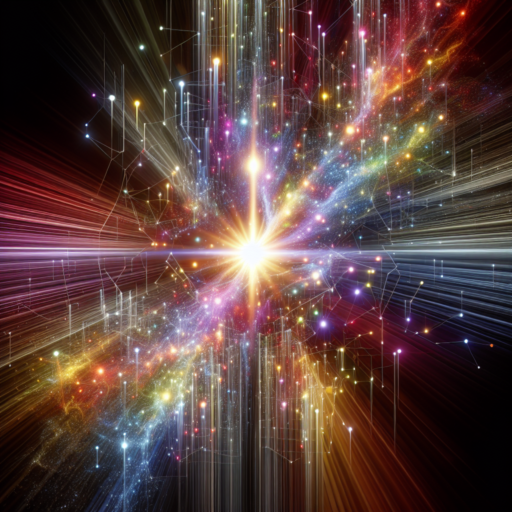Google Lumiere: Illuminating Insights with AI Precision
-
Table of Contents
Introduction
Google Lumiere is not a widely recognized product or service associated with Google as of my knowledge cutoff date in 2023. It is possible that "Google Lumiere" could be a project, code name, or initiative that has not been publicly disclosed or is not well-known outside of specific circles. Without further context or information, it is not possible to provide an accurate introduction to Google Lumiere. If it is a new development that emerged after my last update, I would not have information on it. Please ensure that the name is correct or provide additional details for a more accurate response.Exploring the Capabilities of Google Lumiere in Enhancing Virtual Reality Experiences
Google Lumiere is a groundbreaking platform that is poised to revolutionize the way we interact with virtual reality (VR). As the tech giant's latest foray into immersive experiences, Lumiere is designed to enhance VR by providing creators and users with a suite of tools that elevate the realism and interactivity of virtual environments. This innovative platform is a testament to Google's commitment to pushing the boundaries of what's possible in the digital realm, offering a glimpse into a future where virtual experiences are indistinguishable from reality. At the core of Google Lumiere's capabilities is its advanced rendering technology. This technology allows for the creation of highly detailed and photorealistic scenes that can fool the human eye. By harnessing the power of cutting-edge graphics processing, Lumiere can render complex lighting and shadows in real-time, which is essential for creating a believable virtual world. The platform's rendering engine is optimized to work seamlessly across various devices, ensuring that users can enjoy high-quality VR experiences whether they are using a high-end headset or a more accessible mobile VR solution. Moreover, Google Lumiere emphasizes the importance of user interaction within virtual environments. The platform supports a wide range of input methods, from traditional hand controllers to more sophisticated motion tracking systems. This flexibility enables users to interact with the virtual world in a manner that feels natural and intuitive. Whether it's reaching out to touch a virtual object or navigating through a digital landscape, Lumiere ensures that every action is translated into the VR space with precision and responsiveness. Another significant aspect of Google Lumiere is its focus on sound. The platform incorporates spatial audio technology, which plays a crucial role in creating a fully immersive experience. With spatial audio, sounds within the VR environment can be positioned accurately in three-dimensional space, mirroring the way we perceive sound in the real world. This means that users can detect the direction and distance of sounds, further enhancing the realism of the virtual experience. In addition to its technical prowess, Google Lumiere is also designed to be a catalyst for content creation. The platform provides developers with robust tools to build complex VR experiences without the need for extensive programming knowledge. This democratization of content creation means that a wider range of creators can bring their visions to life, leading to a more diverse and vibrant ecosystem of VR content. From educational simulations to immersive storytelling, the possibilities are virtually limitless. Furthermore, Google Lumiere is built with collaboration in mind. The platform supports multiplayer experiences, allowing users to share virtual spaces with others, regardless of their physical location. This opens up new opportunities for social interaction, remote work, and shared entertainment within VR. As the world becomes increasingly connected, Lumiere's collaborative features are set to play a pivotal role in how we communicate and interact with one another in virtual spaces. In conclusion, Google Lumiere represents a significant leap forward in the evolution of virtual reality. By offering advanced rendering capabilities, intuitive interaction methods, spatial audio, and powerful content creation tools, Lumiere is setting a new standard for what VR can achieve. As the platform continues to develop and gain traction, it is likely to become an indispensable tool for creators and a gateway to unparalleled virtual experiences for users. With Google Lumiere, the line between the virtual and the real continues to blur, ushering in an era where the potential of VR is limited only by our imagination.The Impact of Google Lumiere on the Future of Filmmaking and Content Creation
 Google Lumiere, a groundbreaking initiative by the tech giant, is poised to revolutionize the landscape of filmmaking and content creation. This innovative platform merges the power of artificial intelligence with the creative process, offering filmmakers and content creators an unprecedented suite of tools to enhance their storytelling capabilities. As we delve into the impact of Google Lumiere, it becomes clear that the future of the industry is on the cusp of a transformative era.
At the heart of Google Lumiere is the application of advanced machine learning algorithms that can analyze and process vast amounts of data at an extraordinary pace. This capability allows creators to gain insights into audience preferences and trends, enabling them to tailor their content more effectively to meet viewer demands. Consequently, the platform is not just a technological marvel but also a strategic asset that empowers creators to make data-driven decisions.
Moreover, Google Lumiere's impact extends to the realm of visual effects and post-production. By harnessing the power of AI, the platform can automate time-consuming tasks such as rotoscoping, color grading, and even complex visual effects sequences. This automation not only accelerates the post-production process but also democratizes access to high-quality visual effects, previously the domain of big-budget productions. As a result, independent filmmakers and small studios can now compete on a more level playing field, fostering a more diverse and vibrant creative ecosystem.
In addition, Google Lumiere's AI-driven tools are designed to enhance the collaborative aspect of filmmaking. With cloud-based workflows and real-time editing capabilities, teams can work together seamlessly, irrespective of geographical barriers. This collaborative environment not only streamlines the production process but also encourages a more dynamic exchange of ideas, leading to richer and more innovative content.
Furthermore, the platform's impact on narrative construction cannot be overstated. Google Lumiere provides creators with sophisticated analytics that can predict plot outcomes and audience emotional responses. This predictive power enables writers and directors to craft narratives that resonate more deeply with audiences, potentially leading to more engaging and successful films and series.
As we consider the broader implications of Google Lumiere, it is evident that the platform is set to redefine the role of technology in the creative process. By integrating AI into the very fabric of content creation, Google Lumiere challenges traditional notions of authorship and creativity. The platform suggests a future where human ingenuity and machine intelligence collaborate to produce works that are not only technically impressive but also emotionally compelling.
However, the rise of such technology also raises important questions about the future of the industry. As AI becomes more integrated into content creation, there is a growing concern about the potential displacement of jobs traditionally held by humans. While Google Lumiere can enhance efficiency and creativity, it is crucial for the industry to address these concerns and ensure that the transition to AI-augmented filmmaking is both ethical and inclusive.
In conclusion, Google Lumiere stands as a testament to the transformative power of technology in the arts. Its impact on filmmaking and content creation is multifaceted, offering enhancements in audience analysis, visual effects, collaboration, and narrative construction. As the platform continues to evolve, it promises to usher in a new era of storytelling that is rich in innovation and diversity. The future of filmmaking, with Google Lumiere at the forefront, is not only bright but also boundless in its potential to redefine the very essence of how we create and consume content.
Google Lumiere, a groundbreaking initiative by the tech giant, is poised to revolutionize the landscape of filmmaking and content creation. This innovative platform merges the power of artificial intelligence with the creative process, offering filmmakers and content creators an unprecedented suite of tools to enhance their storytelling capabilities. As we delve into the impact of Google Lumiere, it becomes clear that the future of the industry is on the cusp of a transformative era.
At the heart of Google Lumiere is the application of advanced machine learning algorithms that can analyze and process vast amounts of data at an extraordinary pace. This capability allows creators to gain insights into audience preferences and trends, enabling them to tailor their content more effectively to meet viewer demands. Consequently, the platform is not just a technological marvel but also a strategic asset that empowers creators to make data-driven decisions.
Moreover, Google Lumiere's impact extends to the realm of visual effects and post-production. By harnessing the power of AI, the platform can automate time-consuming tasks such as rotoscoping, color grading, and even complex visual effects sequences. This automation not only accelerates the post-production process but also democratizes access to high-quality visual effects, previously the domain of big-budget productions. As a result, independent filmmakers and small studios can now compete on a more level playing field, fostering a more diverse and vibrant creative ecosystem.
In addition, Google Lumiere's AI-driven tools are designed to enhance the collaborative aspect of filmmaking. With cloud-based workflows and real-time editing capabilities, teams can work together seamlessly, irrespective of geographical barriers. This collaborative environment not only streamlines the production process but also encourages a more dynamic exchange of ideas, leading to richer and more innovative content.
Furthermore, the platform's impact on narrative construction cannot be overstated. Google Lumiere provides creators with sophisticated analytics that can predict plot outcomes and audience emotional responses. This predictive power enables writers and directors to craft narratives that resonate more deeply with audiences, potentially leading to more engaging and successful films and series.
As we consider the broader implications of Google Lumiere, it is evident that the platform is set to redefine the role of technology in the creative process. By integrating AI into the very fabric of content creation, Google Lumiere challenges traditional notions of authorship and creativity. The platform suggests a future where human ingenuity and machine intelligence collaborate to produce works that are not only technically impressive but also emotionally compelling.
However, the rise of such technology also raises important questions about the future of the industry. As AI becomes more integrated into content creation, there is a growing concern about the potential displacement of jobs traditionally held by humans. While Google Lumiere can enhance efficiency and creativity, it is crucial for the industry to address these concerns and ensure that the transition to AI-augmented filmmaking is both ethical and inclusive.
In conclusion, Google Lumiere stands as a testament to the transformative power of technology in the arts. Its impact on filmmaking and content creation is multifaceted, offering enhancements in audience analysis, visual effects, collaboration, and narrative construction. As the platform continues to evolve, it promises to usher in a new era of storytelling that is rich in innovation and diversity. The future of filmmaking, with Google Lumiere at the forefront, is not only bright but also boundless in its potential to redefine the very essence of how we create and consume content.

